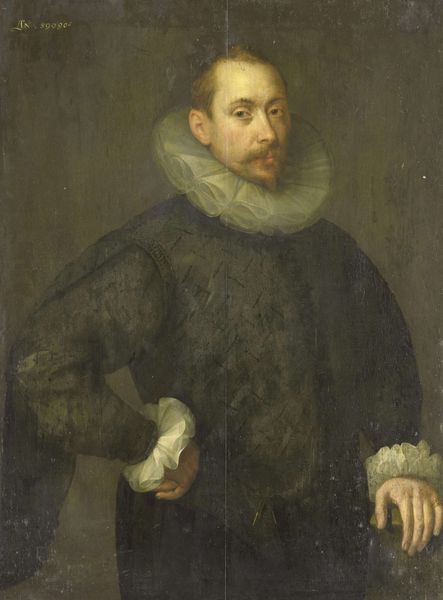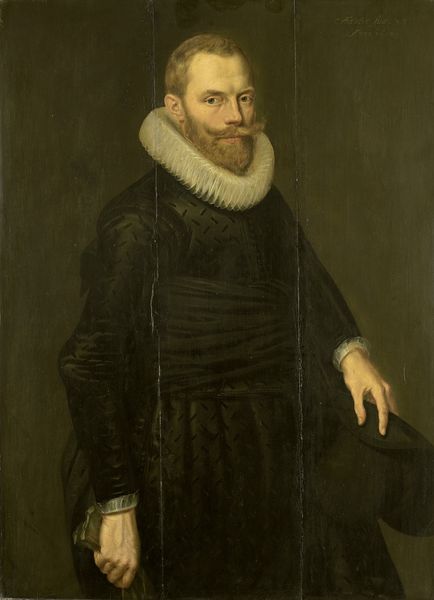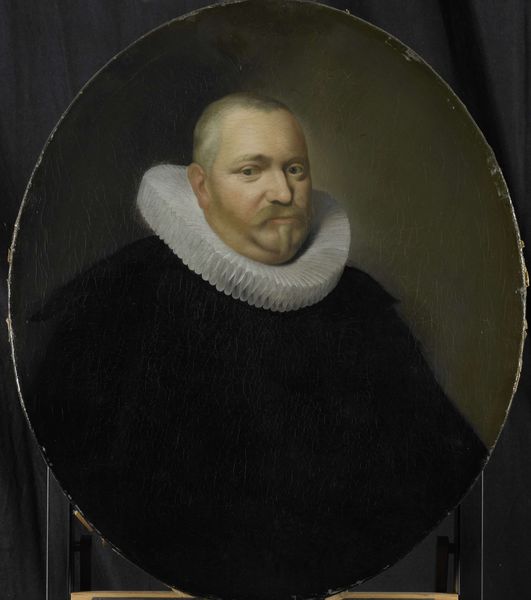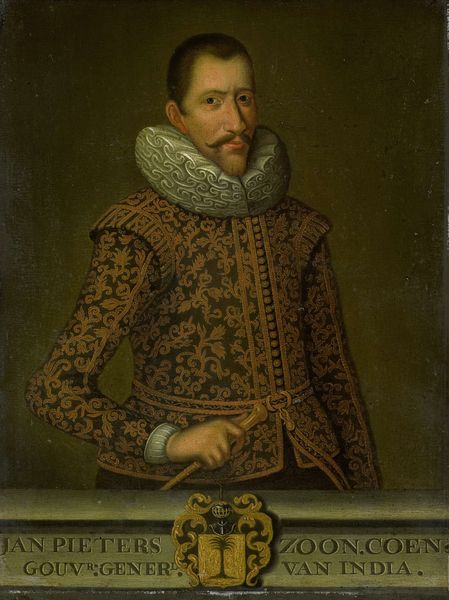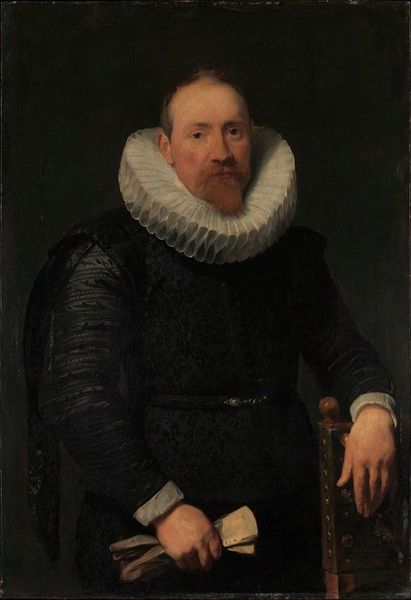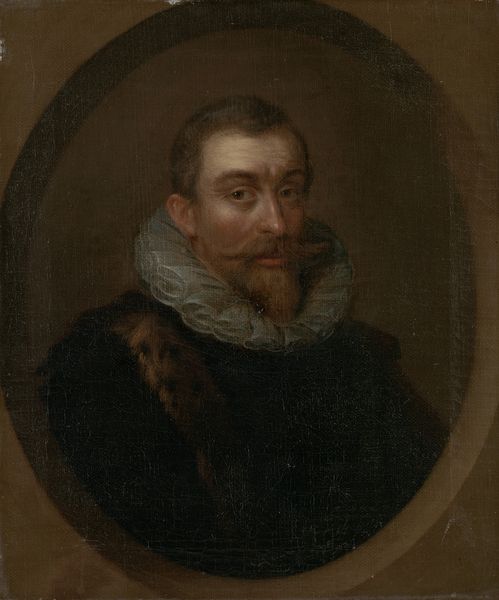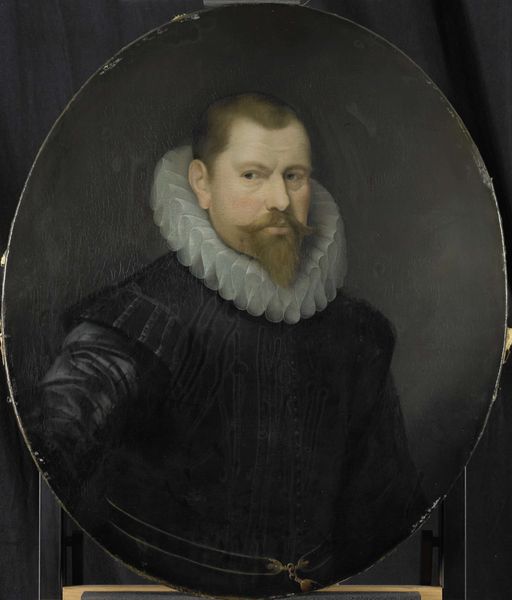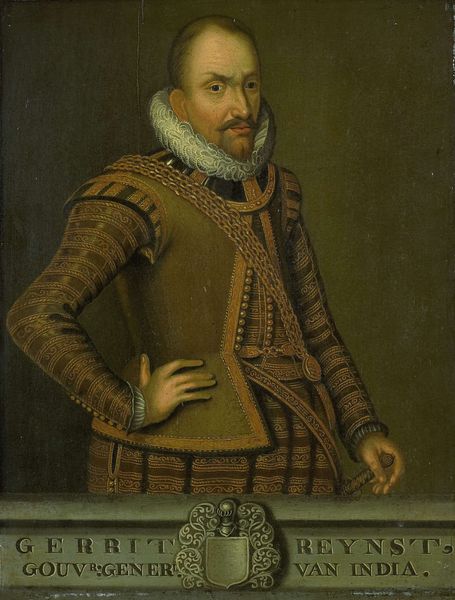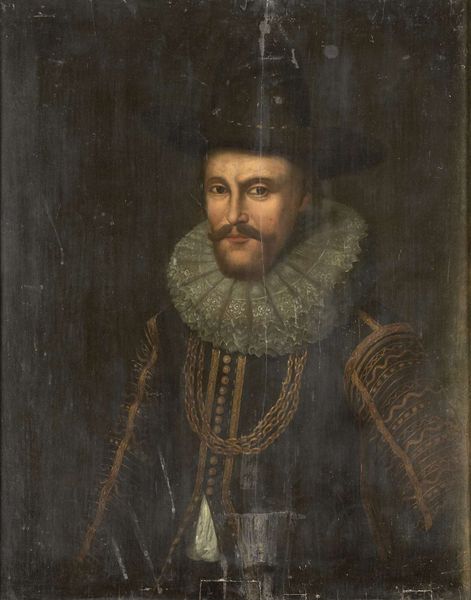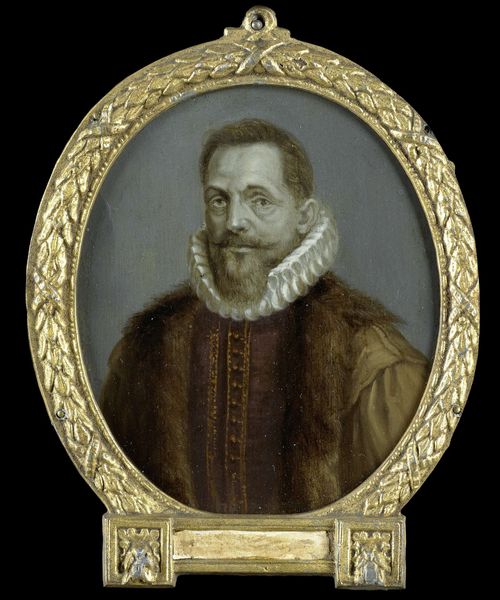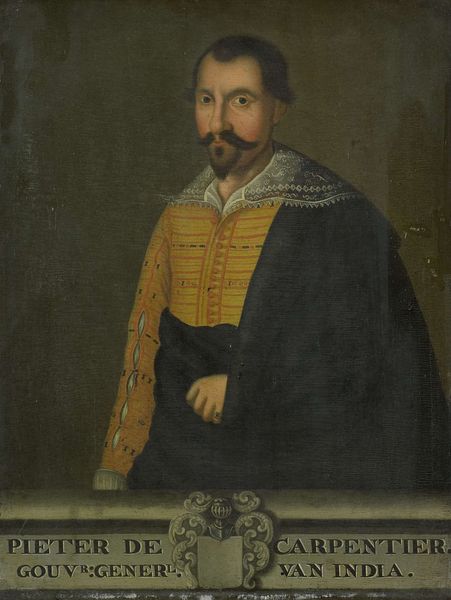
painting, oil-paint
#
portrait
#
baroque
#
portrait image
#
portrait
#
painting
#
oil-paint
#
figuration
#
portrait reference
#
portrait head and shoulder
#
portrait drawing
#
history-painting
#
facial portrait
#
portrait art
#
fine art portrait
#
celebrity portrait
#
digital portrait
Dimensions: height 103 cm, width 81 cm, depth 7.5 cm
Copyright: Rijks Museum: Open Domain
Curator: Immediately striking is the sheer gravitas of this sitter—such an imposing figure in this 1610 portrait by Gortzius Geldorp. It's titled "Jeremias Boudinois". Editor: My first thought? That collar! It's practically a halo made of lace. He looks rather pleased with himself, doesn’t he? Like a Renaissance rock star in a seriously starched bib. Curator: Precisely! That elaborate ruff anchors the composition, doesn’t it? Framing the face as the clear focal point and guiding the eye through Geldorp’s rendering of social stature. The meticulous detail, especially within the context of Baroque portraiture, is hard to miss. Editor: And the oil paint! You can almost smell the linseed. I bet it took ages for those layers to dry. But jokes aside, that stark contrast between the dark cloak and the bright collar… there's a psychological tension. Is he hiding or displaying? Powerful, yet…slightly vulnerable? Curator: An intriguing reading! Structurally, the near-monochromatic scheme—the deep blacks offset by the whites and creams—forces attention onto the face itself. And it's that face, framed as it is, where the psychological elements truly reside. See the light catching his eye? Editor: Definitely playing with light and shadow there, a chiaroscuro thing going on. Gives him depth, literally and figuratively. Makes me wonder about his story... did he commission this, or was it a gift? Did he even like Geldorp? The eyes seem to hold something back. Curator: Irrespective of its personal nuances, the work functions, through its precise visual language, as a powerful signifier of class. Observe how Geldorp captures the textures—the velvet of the doublet, the starched linen. These weren't mere aesthetic choices. Editor: Art always whispers secrets if you listen. Still, I see past the fabric and class and get this feeling of… wistful yearning, maybe? He's playing a role, but is he happy with his lines? Curator: An interesting interpretation indeed. Perhaps we’re both projecting a bit of our own narratives into the work, which is, after all, the privilege—and the peril—of engaging with art. Editor: So, is that what art is all about then, revealing those personal narratives or constructing social barriers? It does a pretty good job of sparking these inner monologues, whatever it’s supposed to do!
Comments
No comments
Be the first to comment and join the conversation on the ultimate creative platform.
